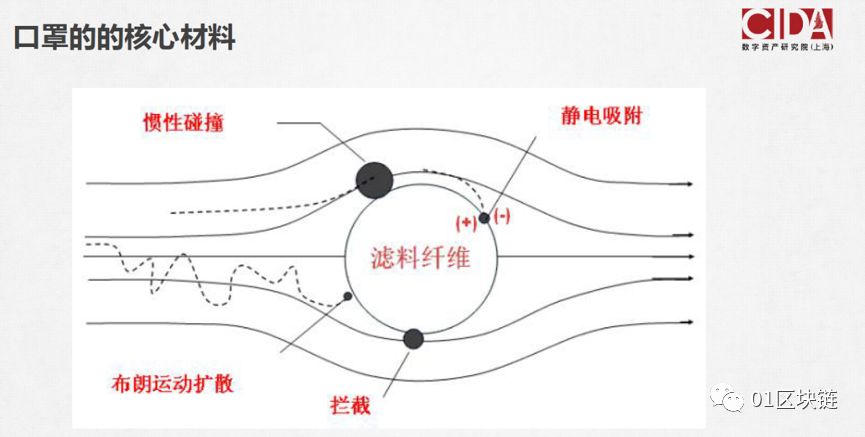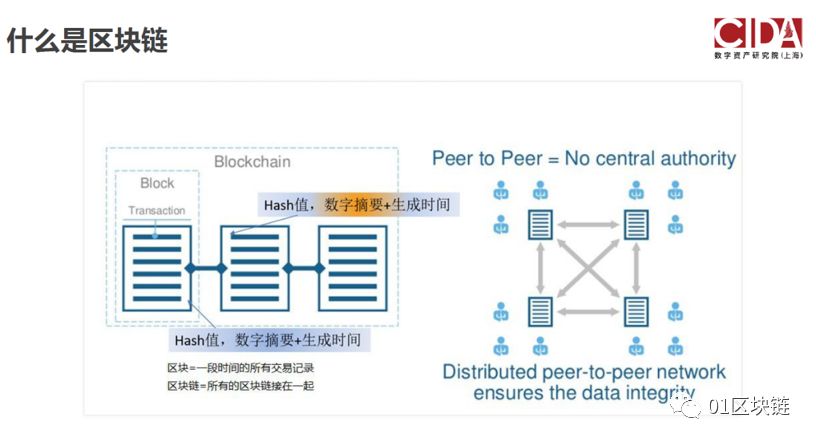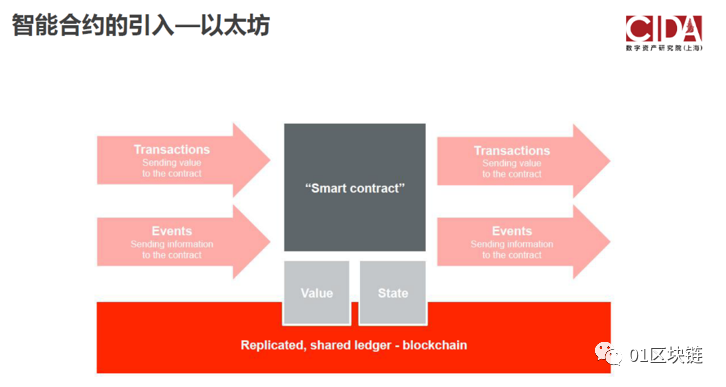Interpretation: mask industry chain and blockchain anti-epidemic
Source: 01 Blockchain
Editor's Note: This article has been deleted without altering the author's original intention. The original title was "Mask Industry Chain and Blockchain Anti-epidemic"
In the second live broadcast on February 9, Zhang Hongwei, the dean of the Shanghai Branch of the Digital Asset Research Institute and the founder of the open source chain , shared a presentation entitled "Mask industry chain and blockchain anti-epidemic" . Teacher Zhang Hong started with the masks and introduced the core technology involved and how to use the blockchain to trace the source. After clarifying the definition of the blockchain technology, the blockchain technology includes mask production. The industrial chain and the application of enterprise development have been systematically explained.
The following is the core content shared by Zhang Hong for the teacher.
- Singapore Digital Bank Application Guide: Eligibility Criteria, Compliance Criteria, Inspection Criteria, and Operation Planning
- Google Cloud announces joining Hedera Hashgraph Management Board and will run a network node
- Bitcoin returns strong to five digits, but US government loses $ 1.7 billion
I. talking about masks
Although the mask is small, it is very effective. Masks have four elements: ① the qualifications of the production unit; ② the standards followed by the production of masks; ③ the date of production; ④ the circulation process.
Masks may seem simple, but they contain two elements that are critical to our lives.
Masks are actually filtering dust or foam with pathogens by fibers. The outermost layer is a waterproof layer, the middle is a real barrier layer, and the innermost is a skin-friendly layer, which is used to absorb moisture.
The core material of the mask is the layer that produces filtration in the middle. Nearly all 95 masks need to use electrostatic adsorption to solve the problem of dust adsorption, because the interval between most mask layers is 1 micron, and the requirement of N95 masks is that the ability to block 0.3 micron particles is greater than 95%. Without the electrostatic adsorption layer, the mesh of the mask must be very dense, so the breathing resistance is very large. Therefore, the real N95 masks on the market must use electrostatic adsorption systems. This is a key technology. Most counterfeit and shoddy products do not have this system, which is invisible to the naked eye.

After the masks are produced, on the production line, there will be many collisions of human hands and machines, and bacteria or viruses may be present in the workshop. This requires a very penetrating disinfectant to be disinfected. Ethylene oxide can be used for disinfection. Ethylene oxide is a broad-spectrum, high-efficiency gas disinfectant. It has strong penetrability to sterilized articles, can reach the deep part of textile articles, and can kill several pathogenic microorganisms, including bacterial propagules, spores, viruses and fungi. It is widely used in medical disinfection and industrial sterilization. But it is also a carcinogen and not environmentally friendly, so we will face two problems: first, do we use this disinfection? Second, ethylene oxide will remain on the mask after disinfection. How to remove it? To solve this problem, the general state requires that masks must be placed on the production line for a period of time after the mask is produced, such as 7 or 14 days, to ensure that the ethylene oxide is volatilized and then sealed and loaded.
The above two problems cannot be seen on the surface. Then, do various manufacturers do it according to regulations? How are you doing? This is what we are very concerned about.
So a small mask, when he has room to make huge profits, will attract many illegal people, at this time someone will talk about the source. But traceability has one of the biggest dilemmas. Traceability is what manufacturers use to prove their authenticity. But if it is traceability provided by a manufacturer that makes fake and shoddy products, do you believe it? So the dilemma of tracing comes, because you can't determine whether there is a problem in the production process.
So, can traceability be established based on blockchain technology? Blockchain traceability was born for several years, but has not been adopted by the market. Today, the question of masks puts the traceability in front of us again. What should we do? How to solve the above problems through blockchain traceability in the mask industry?
Speaking from blockchain technology
1. What is a blockchain?
Blockchain actually refers to the relationship of data. We divide the data into blocks, which are related to each other, so it is called a blockchain. If an ordinary ledger is an electronic form, we can tamper with it arbitrarily, there is no way to prevent the electronic account from being tampered with. Through the mathematical technology of the blockchain, the fidelity of each block can be guaranteed, and once tampered, it will be found immediately.

Why is it called a blockchain? Because this technology puts the generation time and digital fingerprint (hash value) of each block of data on the next page, so that no one can copy this block at any time because the time and content are not same. Second, we put the fingerprint and time of this block on the next page. As long as someone tampers with any of the previous pages, later people can find inconsistencies, which constitutes the magic of mutual supervision between blocks. A supervision chain has been formed.
So, who will help me keep my account? We send (broadcast) the ledger to many people at the same time to keep this ledger. Whoever is right is rewarded. If everyone counts, it will be awarded to the champion, which is the current practice of the Bitcoin mechanism. We describe this bookkeeping process as mining. This is the origin of bookkeeping, broadcasting, and mining in the blockchain.
2.The role of smart contracts
In business, in addition to books, contracts are more important. Is there a way to automatically execute the contract on the blockchain? The answer is yes. In 2015, Ethereum introduced smart contracts to the blockchain. The so-called smart contract is to move a digital / code-based executable contract to the blockchain.
Smart contracts have made great contributions to the blockchain. One is to establish a mechanism based on automatic code execution, and the other is to issue tokens and build various business models.

What can blockchain technology do?
What is a blockchain? It is simply summarized in three sentences: distributed ledger, distributed contract, code-based automatic execution mechanism.
Before understanding what a blockchain can do, it is first necessary to clarify what a blockchain cannot do. There are three main things that blockchain technology cannot do: 1. Cannot raise funds. It is illegal in China to raise funds from an unspecified group of people. 2. It is not possible to buy or sell goods or services directly with digital currencies. 3. It is not even possible to take digital currencies to overseas exchanges for trading. These three will penetrate the bottom line of the existing government. In the foreseeable future, the government will not allow these things.
So, what can a blockchain do? Blockchain is a new social management system and a new business model. Wherever books and contracts are needed, there is value in blockchain. Including 1. Deposit certificate: copyright, invoice, identity, traceability; 2. Finance: equity fundraising, liquidation, mortgage loan; 3. establishment of new business models
What is the significance of the enterprise? The essence of an enterprise is to establish a relationship between people through contracts, earn profits according to business models, and then share profits. This is a contract-based profit sharing mechanism. And the government is an invisible contract-based cooperation. The execution of contracts depends on the legal system. Human society today is a mechanism based on contracts, but this contract is executed by law rather than by code. So what does blockchain mean to society? To promote the enforcement of contracts based on the law, the social cost is too high. Is it possible to automate the contract through code, thereby greatly reducing operating costs and increasing operating speed. Therefore, I believe that in the next ten years, five of the top ten companies by market capitalization will necessarily be in the blockchain field.
Take internal governance as an example. Most companies are non-listed companies, and these companies often cannot solve the problem of employee motivation. The stock option is the greatest invention with huge bugs in the history of business management. The blockchain is used to implement the stock option to avoid moral hazard. At the same time, the blockchain can also be used to solve the problem of shareholder voting in corporate governance; the measurement of external resource injection.
Fourth, mask production and blockchain
For production enterprises, such as mask production, how does production process management use the blockchain? Take the assembly line as an example. In terms of sewing, size, etc., it can be motivated by the production quantity, quality, parameters (defective rate, etc.). In this way, employees can be rewarded quantitatively.
The core issue is marketing. For an enterprise, it is necessary to accurately bring sales information to effective users. The core of precision marketing is to know which communication is effective communication. The core of low-cost marketing is the automatic dissemination of information, including social media dissemination, built-in rewards, automatic settlement, openness and transparency; recommendation is mining, and distribution consumption is mining; mining and rising currency values are the benefit distribution model of the new era. Through this model, comprehensive quantitative evaluation and payment of advertising marketing can be realized.
Finally, how does mask production trace the source of the blockchain? If today I am operating a mask factory, first of all, I will make a time trace and total trace trace for mask production. The material traceability is what material is the mask made of? When did you do it? How many did you make? Second, the process is traceable. Is there any sterilization of ethylene oxide? Is it left for 7-14 days? The third is to combine blockchain with brand communication. The last is to make the traceability reward, and to both the traceability. Through these, manufacturers, consumers, operators, and communicators can enter the new form of benefit sharing through the form of points and digital currency tokens, and break the traditional form of contract implementation based on law.
We will continue to update Blocking; if you have any questions or suggestions, please contact us!
Was this article helpful?
93 out of 132 found this helpful
Related articles
- Electricity is 2 cents, and the policy is gradually opening up. Is Central Asia becoming a "mining paradise" for Bitcoin miners?
- Digital gold, scarcity, and Bitcoin halving
- Report: Darknet activity in 2019 is higher than in the past, how should law enforcement agencies respond in 2020?
- From 1 to 21, an article captures the role of blockchain in government reports
- Shanghai takes the lead in putting crisis into action: suggestions for accelerating the construction of smart cities, including support for blockchain traceability
- Strong alliance! JP Morgan discusses merger of blockchain unit Quorum to ConsenSys
- The two mining pools control 60% of the Monero network's computing power. Will the centralization of the mining pools cause security problems?






